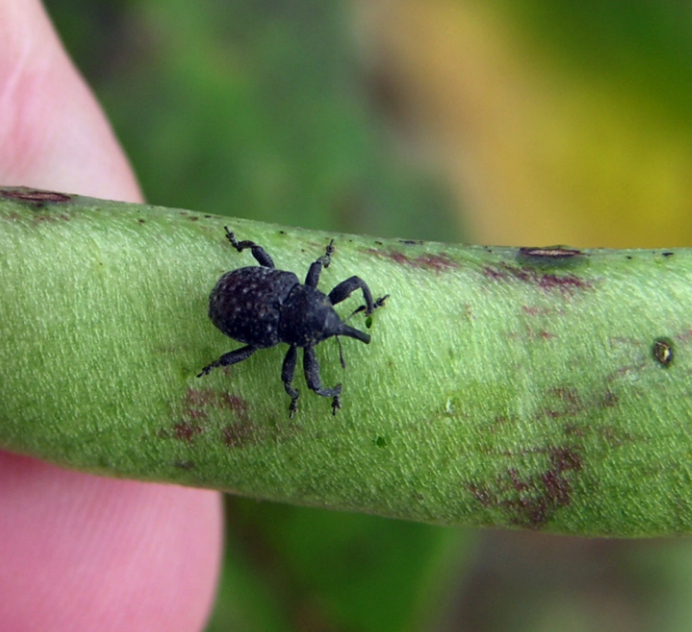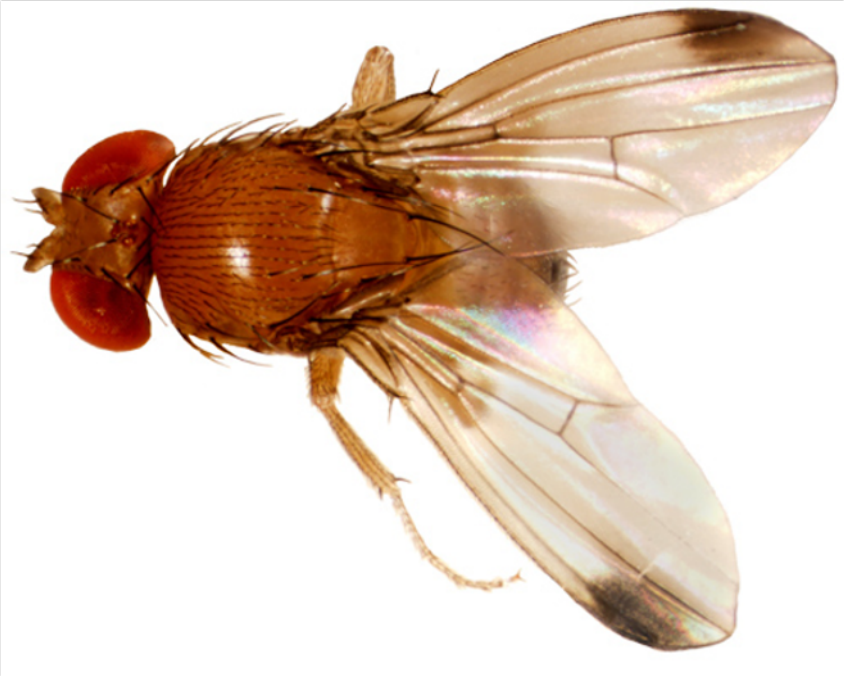Insect pests
-

Helicoverpa zea Also known as tomato fruitworm and bollworm. Authors: David Riley, Alton Sparks, Phillip Roberts, Entomologists, University of Georgia, 2022 Description Immature stages: Eggs are pale green when laid, turning yellow and darkening with age. Eggs are flattened sphere shaped with ridges radiating from top-center. Larvae range in size (1.5 mm – 25 mm).…
-

Tobacco thrips: Frankliniella fusca (Hinds) Western flower thrips: Frankliniella occidentalis (Pergande) Flower thrips: Frankliniella trtici (Fitch) Authors: David Riley, Alton Sparks, Entomologists, University of Georgia, 2022 Description Immature stages: Larval thrips are similar in body structure to adult thrips but lack well developed wings. Wing pads are visible on prepupae and pupae. Larval thrips are…
-

Phyllocoptes fructiphilus Authors: Alejandra Monterrosa, Shimat Joseph, Will Hudson, Jean Williams-Woodward, Bodie Pennisi, University of Georgia, 2020 Description Immature stages: Larvae are transparent becoming white and slightly translucent as they develop through twolarval stages. Adult stages: Yellowish in color, adults measure about 140 to 170 micrometers long, tapered at both ends. Adults have two pairs…
-

Epitrix hirtipennis (Melsheimer) Epitrix fasciata (Blatchley) – Southern tobacco Author: David Riley, Professor, University of Georgia, 2019 Description Immature stages: Tobacco flea beetles have three larval instars, or developmental stages, that are all whitish with darker heads, and all feed on fine roots near the soil surface or occasionally tunnel into larger roots. The tobacco…
-

Ashfaq Sial, Department of Entomology, University of Georgia, 2025 Blueberry bud mite, Acalitus vaccinii (Keifer) is a tiny eriophyid mite. If abundant, bud mites can abort flower buds producing symptoms that resemble cold injury or poor fruit set. Blueberry bud mites are roughly 125th inch long, white to translucent in color, and somewhat carrot-shaped, with the front end or head being a bit larger than the…
-

Sydney Weigand, University of Georgia, 2025 Source: Elmer Gray, Research Professional, University of Georgia, 2025 Summer may be drawing to a close, but public health officials warn that West Nile virus season is still at its peak. The mosquito-borne illness causes disorientation, fever, headache, and in severe cases, encephalitis or meningitis. Officials documented 54 confirmed…
-

Elasmopalpus lignosellus (Zeller) Credit: Adaptation from original fact sheet published by University of Florida, 2020 Sydney Weigand (Ed.), 2025 Description Immature stages: Borer eggs are oval, measuring about 0.6 mm in length and 0.4 mm in width. When first deposited, they are greenish, soon turning pinkish, and eventually reddish. The number of instars, or developmental…
-

Drosophila suzukii (Matsumura) Author: Ash Sial, Entomologist, University of Georgia, 2022 Description Immature stages: Larvae are white with a cylindrical body that tapers on one end, only 1/8”. Adult stages: Adults have a brownish-yellow thorax, black stripes across the abdomen, and distinct red eyes. Males have dark spots on wingtips and black combs on forelegs.…
Posted in: Blueberry, Commodity, Flies, Fruits & Nuts, Insect pests, Invasive pest, Pests, Small fruits -

Diptera: Culicidae Author: Elmer Gray, Public Health Specialist & Entomologist, University of Georgia, 2022 Sydney Weigand (Ed.), 2025 Description Immature stages: During their first stage of development, larvae are small (about 1 mm) and almost see-through. As they progress through subsequent stages, they grow to nearly 1 cm. The pupal stage appears with the fourth…